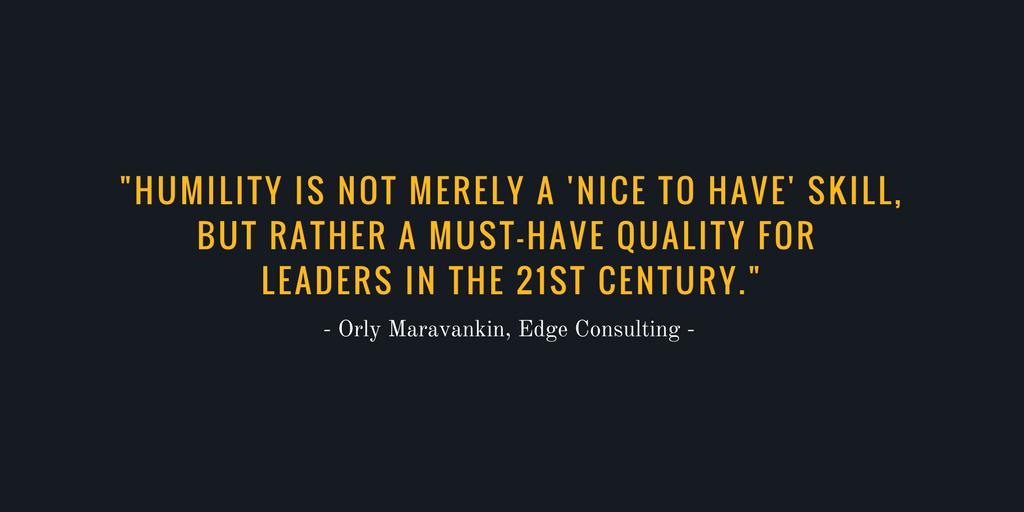What do partnerships look like on your campus?
Do offices within your division collaborate to create programs? Do functional units partner outside the division? Are all parties jointly creating the program or is the crux of the partnership around financial contributions? Is the partnership to advance one unit’s ego, or do all partners come to the table with humility?
The word “partnership” is increasingly popular on college campuses, especially as funding shortages places pressure on campus units. But are campus units engaging in partnerships with humility, or are they seeking to exert their own authority?
As we continue to develop partnerships across departments and divisions, higher ed professionals need to consider their answer to that question.
When partnerships are done right, they build powerful coalitions to advance work being done on campus. As you move through your professional sphere, consider these best practices for developing authentic partnerships grounded in humility and respect.
1. Partnerships should be founded on humility
Individuals (and units) all bring something different and important to the table when working to establish a partnership.
Higher education, in particular, can sometimes create a culture of ego, and this can manifest as someone strutting into a meeting with the mindset to dictate terms rather than with the intentional to fully engage with their prospective partners.

When a unit has more institutional power (such as funding, staff positional power within the institution, the unit is more established, etc), trying to develop a partnership or program to benefit the institution can become a dictatorship rather than a democratic process. Instead, it is important for all involved in the process to engage in humility and de-center themselves. Leave titles and power at the door.
2. Authentic relationship building is imperative
It is not uncommon for some professionals to prefer working alone because it is “easier” than working with others on a project. After all, mutually beneficial partnerships take time and work. No decision can be made in a vacuum. Some professionals may feel it is a stressful experience. However, the simple tip to make partnership work less stressful is: build an authentic relationship with the staff and/or students in the partnering unit.
Relationship-building skills often are linked to personality, but truthfully, it takes time and practice to get good at building relationships with others. You don’t need to approach building relationships with the goal of building friendships, as some professionals prefer to separate work from personal life, but there should be an expectation to build a relationship where all parties understand the values and work styles of the other and there is mutual appreciation for them.
When this relationship exists, the partnership process becomes more fluid as the parties find it easier to pick up a phone to ask a question and collaborate at every stage of the process. This is especially helpful when one party makes a mistake (misses a deadline, forgets to file paperwork, etc).
Without a relationship, it is easy to write off that individual or the entire unit, and to leave the partnership or at least cut ties after the project is complete. But with an authentic relationship, we are more apt to consider the humanity of the other person and give them grace. Everyone makes mistakes, and better understanding our partners helps us to remember this.
3. Mutually beneficial partnerships are a must
Scenario 1
Imagine that a student activities unit and the student programming board that they advise want to coordinate a program for Black History Month. However, the professionals and students leaders within this area have no idea what type of program to plan; in this situation let’s imagine these folks are all White and are not well educated on the experiences of Black students at the college.
They decide (rightly so) against throwing together a haphazard plan to do an event on their own that may come off as tokenizing or culturally inappropriate, and contact the campus multicultural center to help them plan an event. The multicultural center is overtaxed but staff, who are all people of color, would prefer to help guide the event planning instead having an undesirable event occur on campus. The White student activities staff and student leaders feel uncomfortable planning an event about Black History, and instead push to have the multicultural center staff plan the event, promising that they will run the event and pay for everything. Now the multicultural center staff feels like a new event for a major month has been pushed on them, but they may do it just so the event is done correctly. However, the student activities staff and student leaders fall through and don’t properly staff the event.
This scenario is rather common, but it’s also avoidable. One way this could have been a mutually beneficial relationship is for the two groups to have created a written agreement for planning the program and come to a consensus. Ideally, the student activities team would ask the multicultural center staff to either consult on the event or have a staff member work directly with the student activities team to collaborate on a program and build it together.
Scenario 2
One of the largest colleges within the institution, College Z, wants to establish a major event on a specific subject matter. They have some funding and a plan for the programs, but not the staff to run the extensive event.
They move to strong-arm Residence Life to have the 200 resident advisors to volunteer at the events and bring their residents and go to a higher authority on campus to force the student union to provide the 1,000-person ballroom space for free on a full Saturday. College Z could claim the student union and residence life are “partners” for the event, but in truth those entities are sponsors, because all they do is provide resources for the program.
The units were not involved in the planning of the event, they did not connect from their own free will, and College Z used political power to bend these units to their will much like Sauron with the One Ring to Rule Them All.

Ideally, College Z staff should have approached the units with their ideas and sought to fully collaborate on the program planning and implementation. Instead, College Z staff has developed a bad reputation and multiple units on campus will work to avoid them.
Neither of these scenarios were mutually beneficial. The term mutually beneficial relationships is utilized often in service-learning work and it should be applied to any type of partnership.
Within service-learning, the goal is to build partnerships between the institution and a community partner where all parties benefit. Historically, service learning placed a strong emphasis on the institution and its students benefitting, while using the community partner like a drive-thru service provider. Often, the institution had the majority of power (funding, faculty with PhDs, etc) and did not consider the needs of the community partner, such as in the examples above.
An emphasis on mutually beneficial relationships ensures that students, staff. faculty, and community partners all benefit equally regardless of societal power (as entities as well as the personal identities of those involved), albeit in different ways. This philosophy can be easily applied to on-campus partnerships.
Think of partnerships as a way to find the missing puzzle pieces of your unit’s goal. Each unit brings something to the table – perhaps funding, creativity, connections, specific populations of students they work with, or something else. It is important to value all these pieces and provide a space that encourages equal participation among all partners.
Keep your humility close to you, build authentic relationships, and make sure all partners mutually benefit from the project. Happy relationship building!

Editor’s note: If you’re curious about the usage of “Black” and “White” in this blog post, check out this article from the Radical Copyeditor, and then take a look at our inclusion page.





